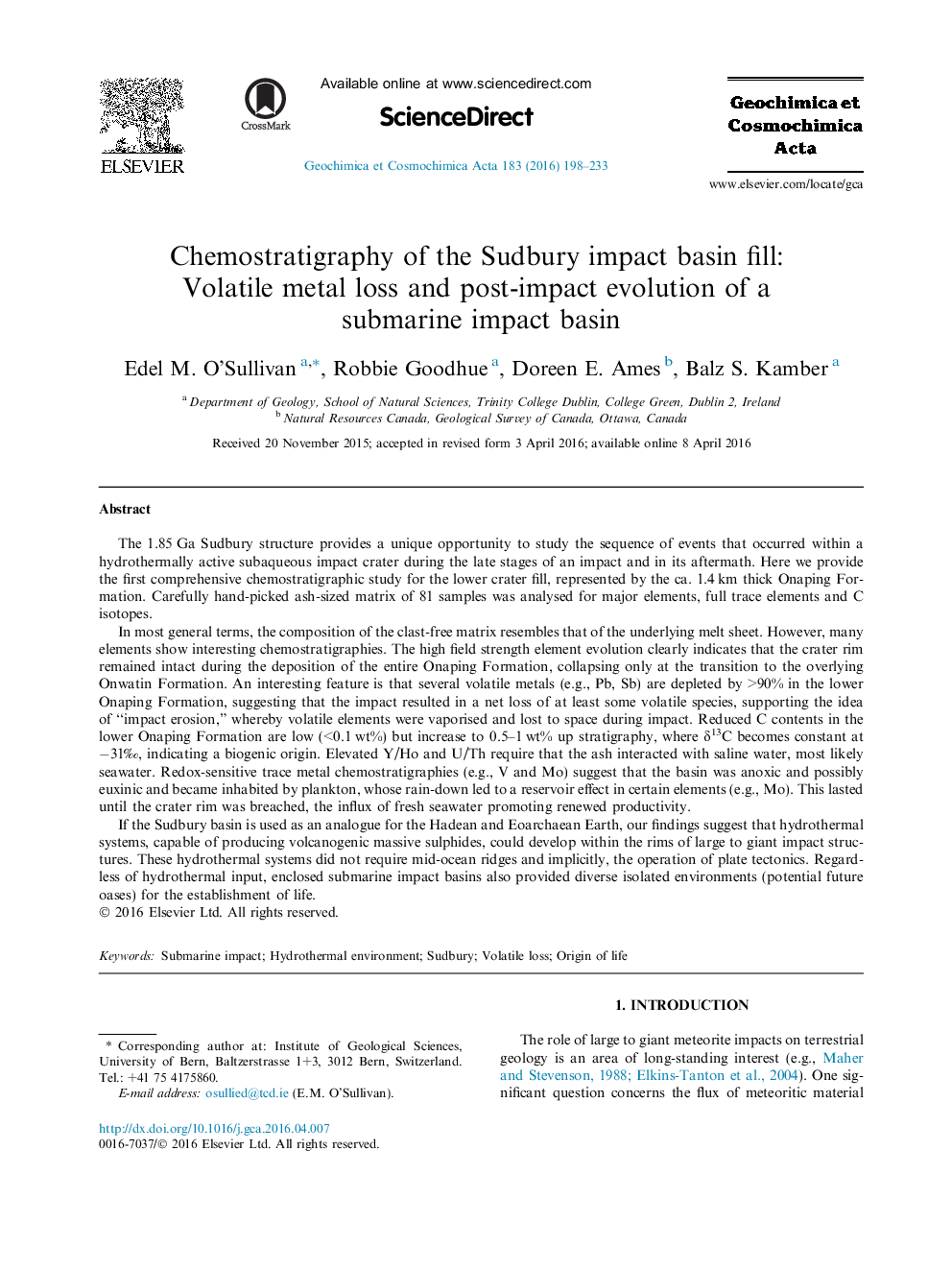| کد مقاله | کد نشریه | سال انتشار | مقاله انگلیسی | نسخه تمام متن |
|---|---|---|---|---|
| 6437226 | 1637974 | 2016 | 36 صفحه PDF | دانلود رایگان |
The 1.85 Ga Sudbury structure provides a unique opportunity to study the sequence of events that occurred within a hydrothermally active subaqueous impact crater during the late stages of an impact and in its aftermath. Here we provide the first comprehensive chemostratigraphic study for the lower crater fill, represented by the ca. 1.4 km thick Onaping Formation. Carefully hand-picked ash-sized matrix of 81 samples was analysed for major elements, full trace elements and C isotopes.In most general terms, the composition of the clast-free matrix resembles that of the underlying melt sheet. However, many elements show interesting chemostratigraphies. The high field strength element evolution clearly indicates that the crater rim remained intact during the deposition of the entire Onaping Formation, collapsing only at the transition to the overlying Onwatin Formation. An interesting feature is that several volatile metals (e.g., Pb, Sb) are depleted by >90% in the lower Onaping Formation, suggesting that the impact resulted in a net loss of at least some volatile species, supporting the idea of “impact erosion,” whereby volatile elements were vaporised and lost to space during impact. Reduced C contents in the lower Onaping Formation are low (<0.1 wt%) but increase to 0.5-1 wt% up stratigraphy, where δ13C becomes constant at â31â°, indicating a biogenic origin. Elevated Y/Ho and U/Th require that the ash interacted with saline water, most likely seawater. Redox-sensitive trace metal chemostratigraphies (e.g., V and Mo) suggest that the basin was anoxic and possibly euxinic and became inhabited by plankton, whose rain-down led to a reservoir effect in certain elements (e.g., Mo). This lasted until the crater rim was breached, the influx of fresh seawater promoting renewed productivity.If the Sudbury basin is used as an analogue for the Hadean and Eoarchaean Earth, our findings suggest that hydrothermal systems, capable of producing volcanogenic massive sulphides, could develop within the rims of large to giant impact structures. These hydrothermal systems did not require mid-ocean ridges and implicitly, the operation of plate tectonics. Regardless of hydrothermal input, enclosed submarine impact basins also provided diverse isolated environments (potential future oases) for the establishment of life.
Journal: Geochimica et Cosmochimica Acta - Volume 183, 15 June 2016, Pages 198-233
